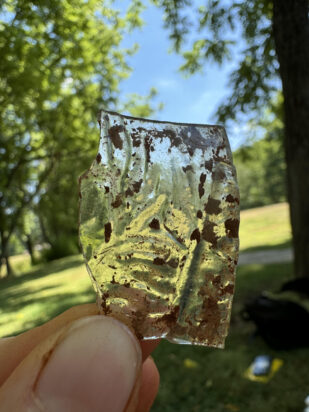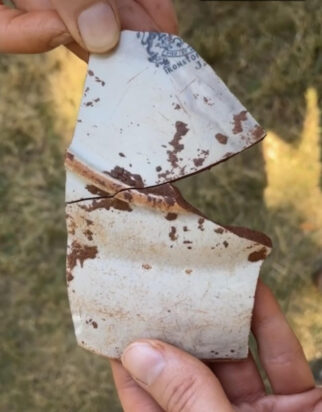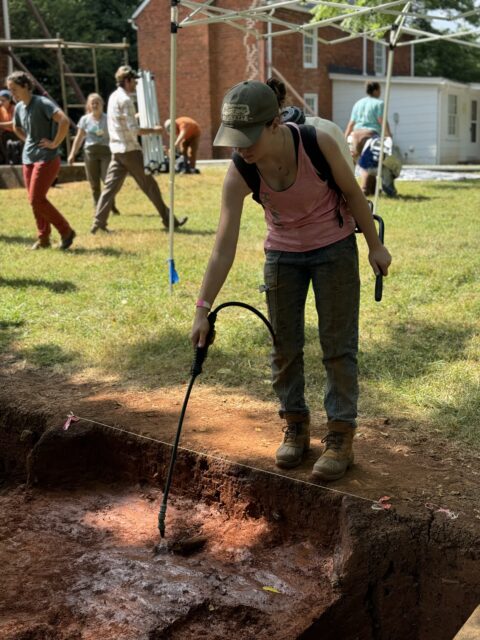Archaeology Blog
2024 Field School Week 3 (Part Two)
By: Josie Schreiber and Collyn Fritz
The archaeology of slavery was the main topic of our readings and lectures this week. We had a few brief lectures given by Poplar Forest Archaeology Laboratory Supervisor, Karen Mcllvoy, on the history of the African diaspora and material culture associated with sites of enslavement. Research Archaeologist Dr. Steve Lenik also gave a lecture on the slave trade, with an emphasis on the Atlantic world. Steve discussed the trade routes of the Transatlantic Slave Trade and the economic relationship between Europe, the Americas, and Africa — specifically, the trade of enslaved peoples, sugar, tobacco, and culture.
On our days in the lab, we washed artifacts and practiced cataloging, and we also had an introduction to the Digital Archaeological Archive of Comparative Slavery (DAACS for short). This handy database is maintained by the archaeology department of Monticello (who we met earlier in the week!) and is useful for comparing and tracking material culture relating to slavery found in the United States and Caribbean. Some elements that can help identify sites of enslavement include the identification of subfloor pits, as well as material elements like glass beads and pierced coins. These elements can be found at Poplar Forest and other sites in the Americas. A more comprehensive dataset of the material culture found at sites relating to slavery can be found in the DAACS database.
In the field, there is no shortage of artifacts found. Some of the most interesting artifacts found this week included: a piece of a glass flask, a Native American projectile point, and a large piece of Ironstone pottery! It is interesting to see the range of artifacts found within the same site which goes to show the depth of the history of the landscape. To cap off the week, we invited the local community, including our friends and family, out for Public Archaeology Day to celebrate Juneteenth. There was a great turnout! And it was a pleasure to introduce kids and adults to archaeology at this important site.


